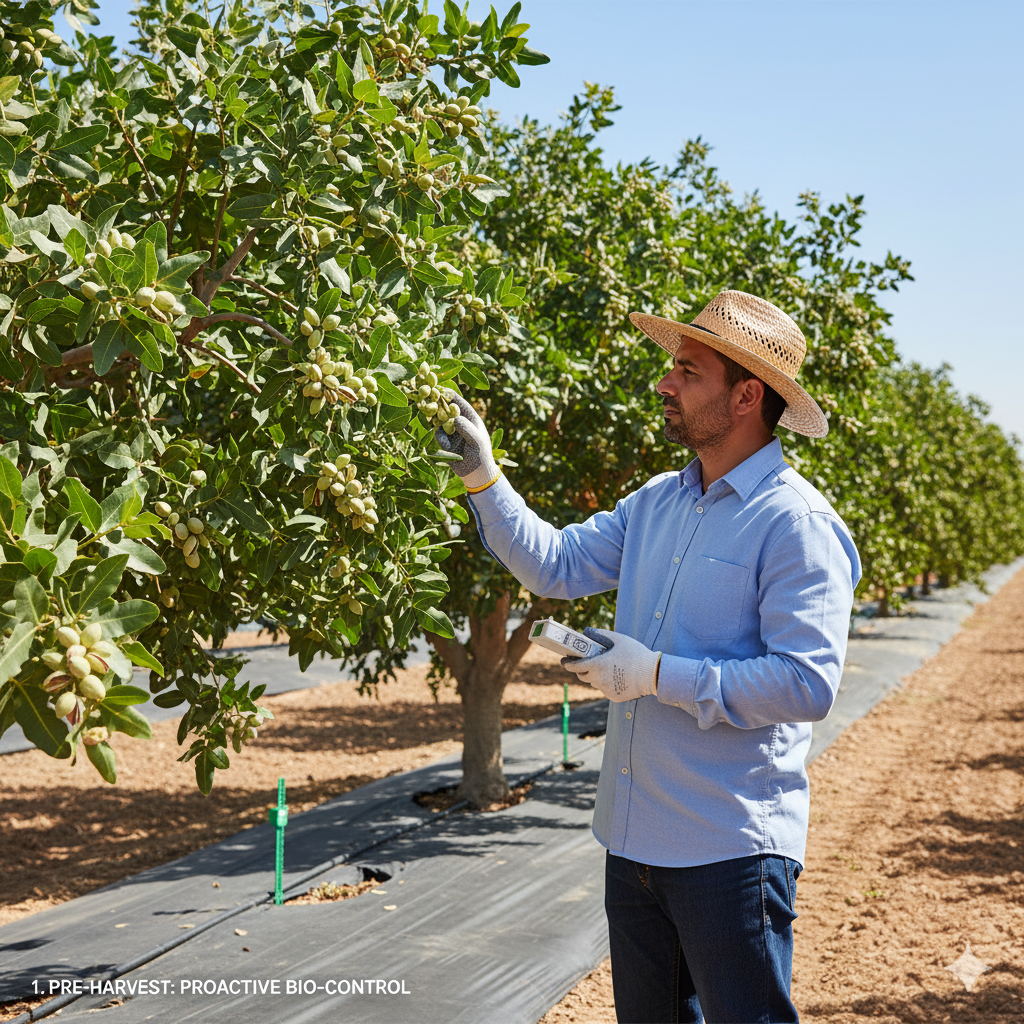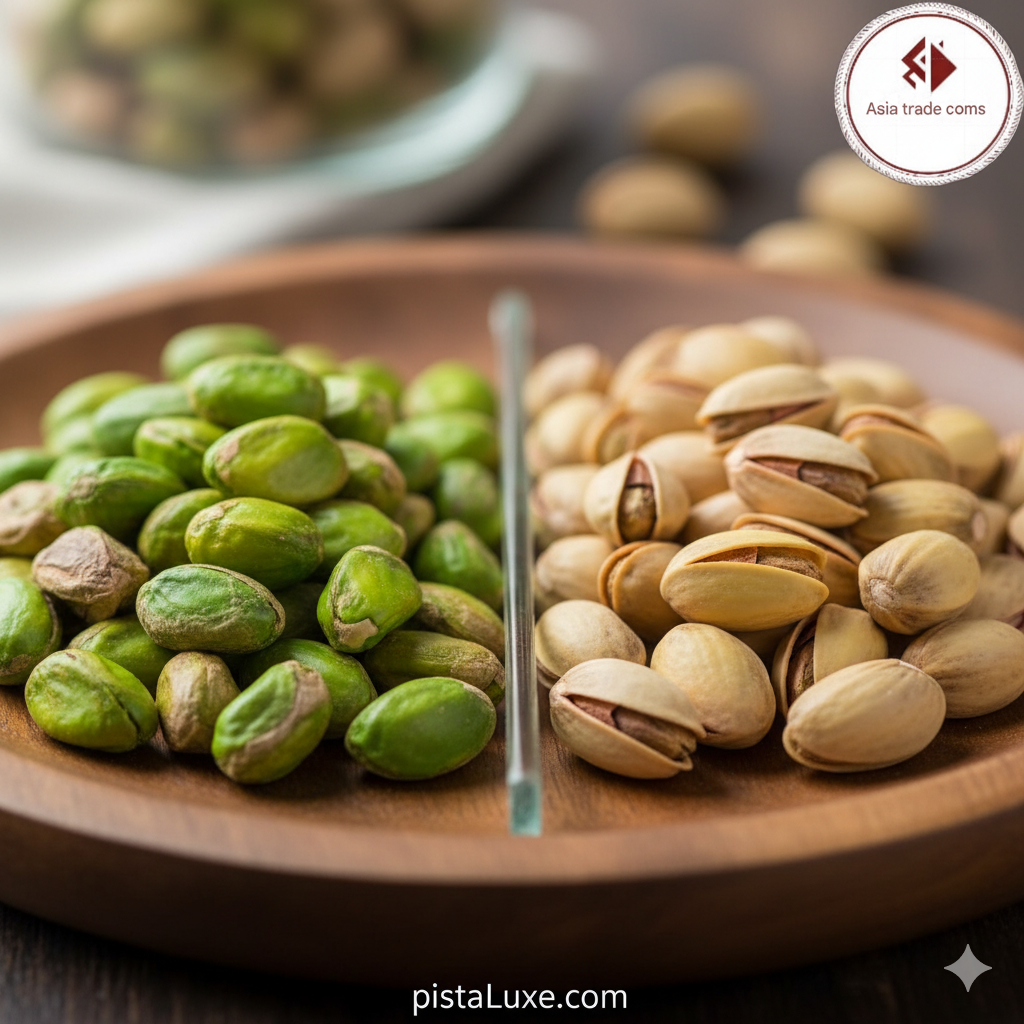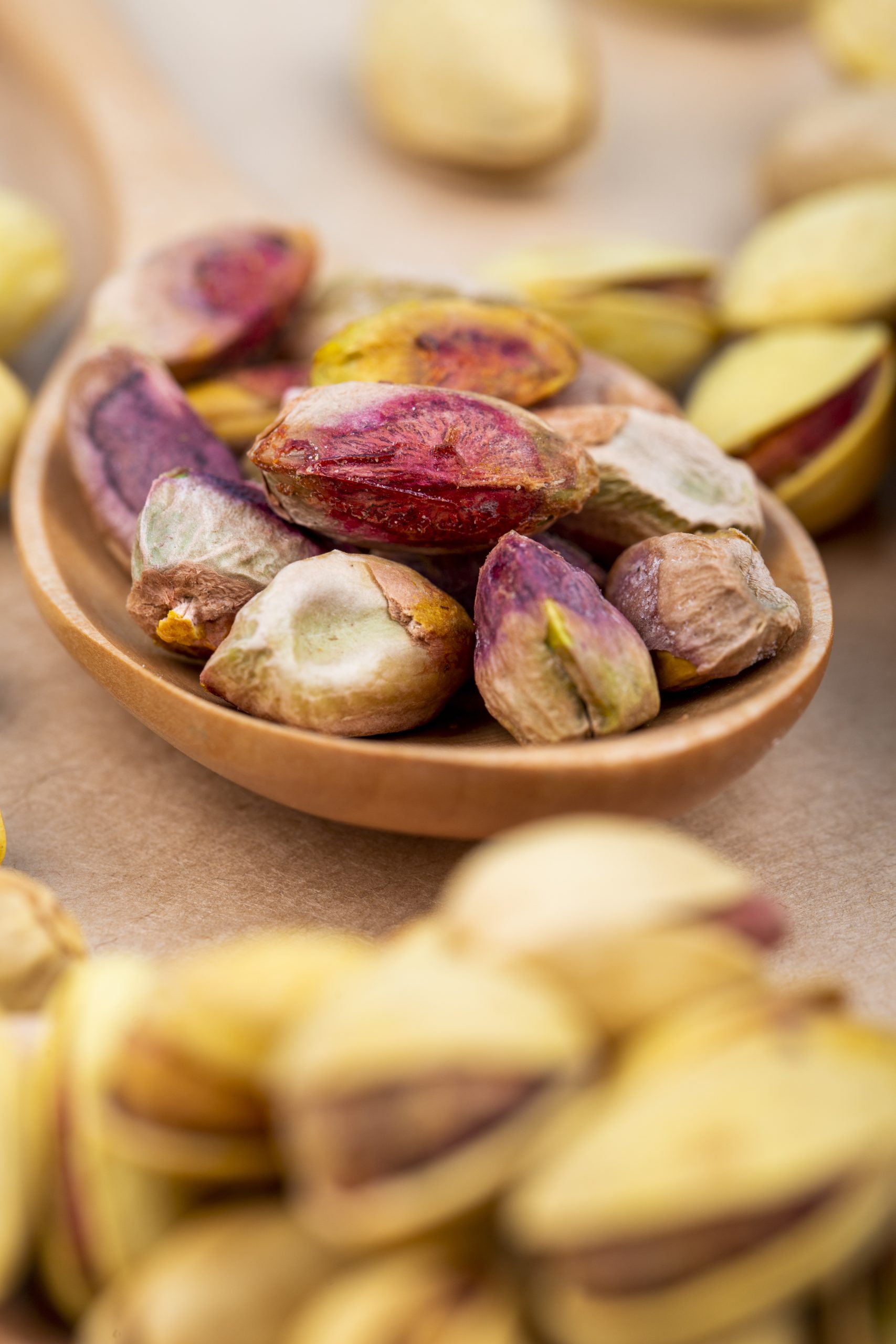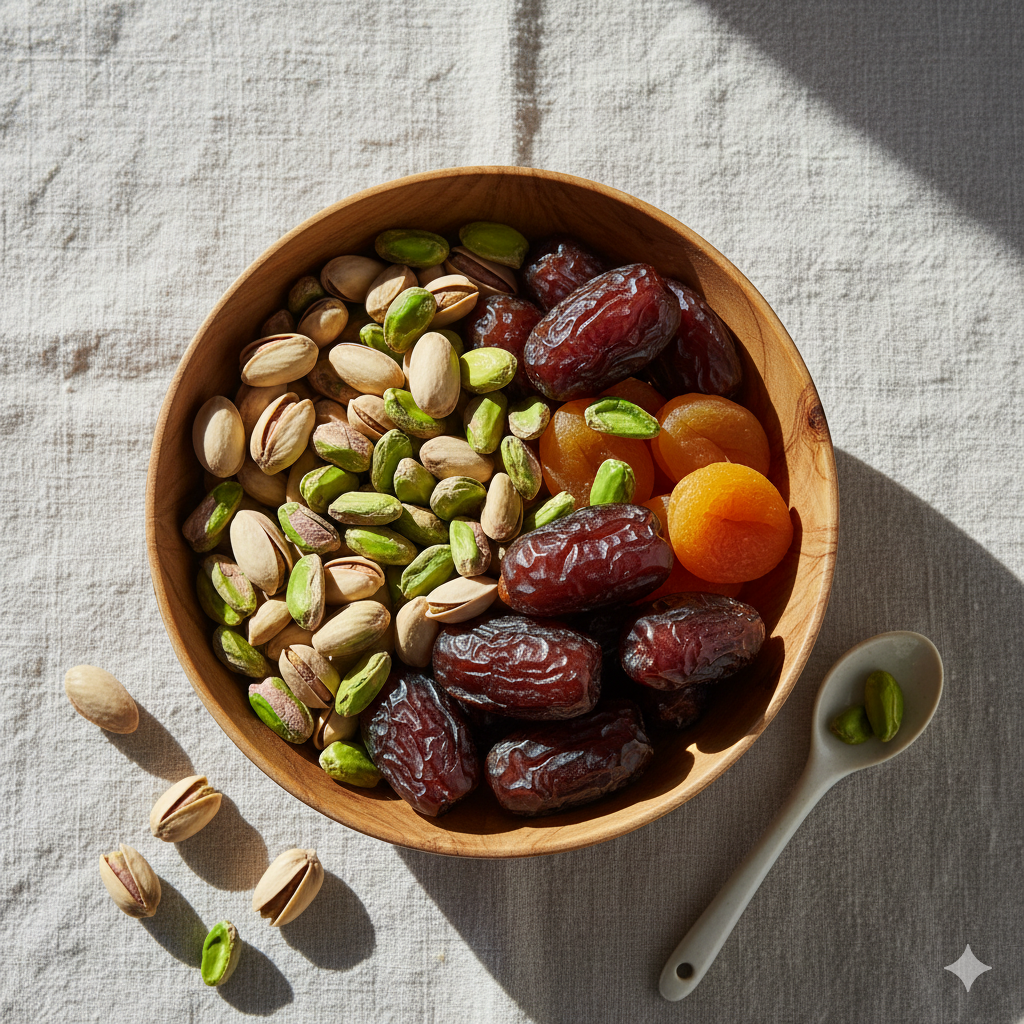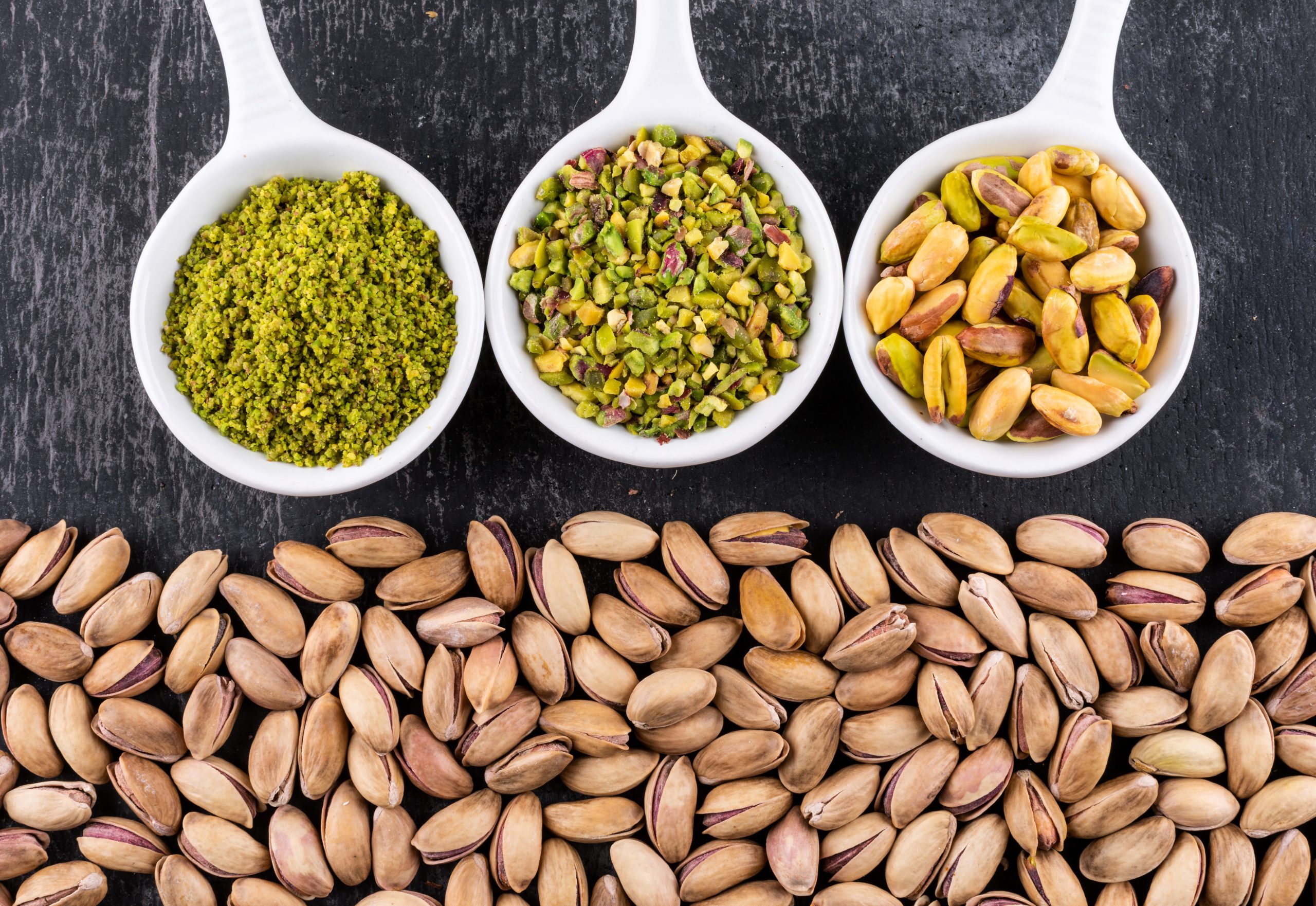
Article 1: From Orchard to Export: A Comprehensive Guide for Pistachio Producers on Maximizing Yield and Managing Risk
Introduction
The global pistachio market is characterized by high demand for quality and consistency, placing immense pressure on producers to adopt advanced agronomic and operational practices. Maximizing yield is intrinsically linked to mitigating inherent risks associated with climate variability, pest outbreaks, and post-harvest quality degradation. This comprehensive guide outlines critical strategies spanning advanced orchard management, precise yield optimization techniques, and stringent adherence to processing standards to secure profitability in the competitive global arena.
Section 1: Advanced Soil and Orchard Management
The foundation of a high-yielding pistachio orchard lies in a meticulous understanding and management of the growing medium. Pistachios, while relatively drought-tolerant, respond dramatically to precise nutritional and hydrological inputs tailored to their specific phenological stages.
The Crucial Role of Detailed Soil Analysis and Specific Nutritional Requirements
Pistachio trees thrive in deep, well-drained loamy to sandy-loam soils, exhibiting high tolerance for salinity but low tolerance for waterlogging. Comprehensive soil analysis must extend beyond basic NPK levels to include micronutrient profiling and cation exchange capacity (CEC).
Nutrient Requirements:
Pistachio trees exhibit specific uptake patterns:
- Nitrogen (N): Essential for vegetative growth and protein synthesis. Application timing is critical; split applications before bud break and post-hull split optimize uptake while minimizing leaching.
- Phosphorus (P): Crucial for root development and energy transfer. Applications should be targeted during dormancy or early spring.
- Potassium (K): Highly influential on fruit size, shell quality, and water use efficiency. Deficiency often manifests as marginal leaf necrosis.
- Micronutrients: Zinc (Zn) and Boron (B) are paramount. Zinc deficiency severely limits canopy development, while Boron is vital for successful flowering and nut set. Foliar applications are often the most effective route for correcting acute deficiencies of these elements.
Nutrient Balance Equation: Optimal nutrient delivery is often expressed through the ratio of applied nutrients relative to the tree’s uptake needs, often modeled using predictive algorithms based on historical yield data. For instance, maintaining an optimal $\text{K}/\text{N}$ ratio in late summer can positively influence next season’s flowering intensity.
Modern Irrigation Techniques and Water Resource Management in Arid Regions
Water scarcity dictates the adoption of highly efficient irrigation technologies. Traditional flood irrigation is obsolete due to excessive evaporative loss and suboptimal root zone saturation.
Pressurized Drip Systems: Micro-irrigation, specifically subsurface drip irrigation (SDI), is the preferred method. SDI minimizes surface evaporation, delivers water directly to the root zone, and allows for the precise application of soluble fertilizers (fertigation).
Water Management Strategy: Effective management requires a deficit irrigation approach calibrated to the tree’s physiological stage:
- Pre-Bloom/Bloom: High water demand to support flowering and fruit initiation.
- Nut Fill (Early Summer): Critical period where water stress drastically reduces kernel size and weight.
- Hull Split: Moderate reduction in water supply can encourage synchronization of maturity, but severe stress must be avoided to prevent early nut drop.
The Soil Water Balance Equation is the core methodology:
[ \text{Water Applied} = (\text{Evapotranspiration} \pm \text{Deep Percolation} + \text{Surface Runoff}) + \Delta \text{Soil Water Storage} ] Monitoring soil moisture tension using tensiometers or Frequency Domain Reflectometry (FDR) probes allows for irrigation scheduling based on actual tree water use ($\text{ET}_c$) rather than arbitrary calendar schedules.
Implementing Bio-fertilizers and Organic Matter
In high-saline environments common to pistachio cultivation, enhancing soil structure is vital for improving infiltration and reducing salinity impact.
Organic Amendments: Incorporating compost, cover crops (e.g., legumes), or manure significantly increases Soil Organic Carbon (SOC), boosting the soil’s water-holding capacity and CEC. This mitigates the effects of periodic water stress.
Bio-fertilizers: The use of plant growth-promoting rhizobacteria (PGPR) and mycorrhizal fungi establishes symbiotic relationships that enhance nutrient solubilization, particularly phosphorus, and improve root system resilience against soil-borne pathogens.
Section 2: Optimization and Yield Enhancement Techniques
Achieving peak production requires proactive canopy manipulation and rigorous defense against biological threats.
The Methodology of Precise Pruning to Maximize Light Penetration and Fruit Bearing
Pistachio yield is directly correlated with the amount of photosynthetically active radiation (PAR) reaching the fruiting wood. Over-dense canopies lead to shading, reduced fruit set in interior branches, and increased susceptibility to fungal diseases.
Pruning Objectives:
- Structural Pruning (Establishment Phase): Establishing a strong central leader or modified central leader system, prioritizing wide branch angles ($\text{>45}^\circ$) to support heavy nut loads.
- Maintenance Pruning (Bearing Trees): Focused on thinning cuts to remove crossing, diseased, or overly vigorous upright (water) shoots, and heading cuts judiciously applied to encourage lateral branching without excessively reducing the bearing surface area. Pruning should generally occur during the dormant season (late winter) to minimize sap bleed.
Light Interception: The goal is to maintain an optimal Light Interception Efficiency (LIE). Excessive vegetative growth diverts energy from reproductive sinks; selective removal of non-productive wood redirects assimilates toward nut development.
Integrated Pest Management (IPM) for Critical Pests and Diseases
A successful IPM strategy relies on monitoring, economic thresholds, and targeted interventions rather than prophylactic blanket spraying.
Key Threats and Management:
- Pistachio Psyllid (Agonoscena pistaciae): Causes leaf curling and honeydew secretion, reducing photosynthetic capacity. Management relies on timely insecticide application corresponding to nymphal stages, often guided by degree-day models, and encouraging natural predators (e.g., lacewings).
- Pistachio Gummosis (Bacterial Blight): Caused by Xanthomonas arboricola pv. pistaciae. Prevention is paramount: avoid overhead irrigation, sanitize pruning tools between trees, and apply copper-based bactericides pre-bloom and post-harvest.
- Navel Orangeworm (Amyelois transitella): The most damaging insect pest, attacking nuts in all instars. Monitoring with pheromone traps dictates the timing of targeted larvicidal treatments (often timed for the second generation hatch) when nuts reach the 50% hull split stage.
The Importance and Timing of Effective Cross-Pollination
Pistachio is dioecious, necessitating separate male and female trees. Pollination is mediated almost entirely by wind, requiring a density of functional male trees and optimal wind conditions during bloom.
Male-to-Female Ratio: A ratio of 1 functional male tree to 8–12 female trees is generally sufficient, depending on wind exposure.
Pollinator Management: Male trees must be managed to ensure synchronous pollen release with female bloom. Pollen viability is low and highly sensitive to desiccation. In large, modern orchards, supplemental pollination using mechanical pollen sprayers during optimal morning conditions can significantly boost yields where natural pollination is sparse.
Section 3: Standardized Harvesting and Processing
The premium value of pistachios is rapidly lost post-harvest if processing is delayed or sub-standard. Quality preservation must be the top priority from the moment the hull splits.
Determining the Optimal Harvest Time to Preserve Kernel Quality and Color
Harvest timing directly affects kernel filling, shell opening percentage, and kernel color (which dictates market grade).
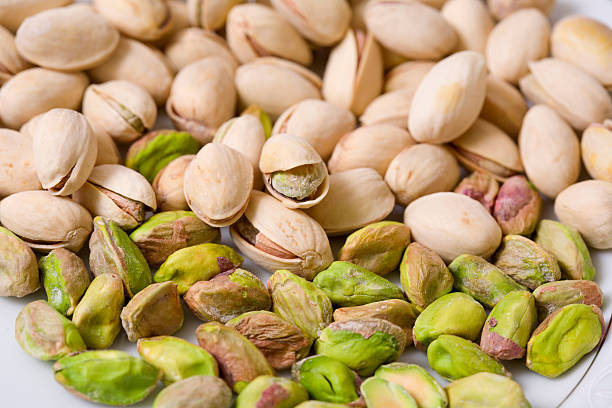
Maturity Indicators:
- Hull Split Percentage: Harvesting typically commences when 80–95% of the nuts have naturally split their hulls. Premature harvest results in lower kernel weight and higher percentages of “blanks” (empty shells).
- Kernel Color: The desirable green hue develops as chlorophyll degrades. Over-ripeness leads to brownish discoloration and reduced market desirability.
Harvesting should occur rapidly, often using mechanical shakers, followed by immediate collection to prevent ground contact, which invites pests and fungal contamination.
The Necessity of Rapid Post-Harvest Processing
Once harvested, nuts must be processed to halt microbial activity and stabilize the product for long-term storage.
- Washing: Immediate washing removes sugary residues from the hull, which are primary substrates for mold growth.
- Drying: This is the most critical step. Moisture content must be rapidly reduced to 6% or below (ideally 4-5%) for safe storage and shelling. High-temperature mechanical dryers must be used carefully to prevent kernel scorching, which causes discoloration and flavor degradation. Slow drying is the primary cause of mold introduction.
- Shelling: Mechanical shelling must be calibrated to minimize shell fragments contaminating the kernel, as fragments increase the likelihood of mechanical damage and toxin ingress.
Key Strategies for Preventing Aflatoxin Contamination in the Supply Chain
Aflatoxins, particularly $\text{AFB}_1$, produced by Aspergillus flavus and Aspergillus parasiticus, are severe contaminants that lead to immediate rejection in high-value export markets.
Prevention Hierarchy:
- Orchard Level: Maintain optimal moisture stress during the critical maturation phase (hull split) to minimize fungal proliferation. Rapid harvest minimizes exposure time.
- Drying Integrity: Strict control over drying is the single most effective preventative measure, as Aspergillus cannot thrive in low moisture environments.
- Storage: Store in climate-controlled warehouses where temperature and relative humidity ($\text{<60}%$) are strictly maintained.
- Sorting and Testing: Utilize high-throughput optical sorters to remove discolored, split, or damaged nuts, which are prone to infection. Mandatory batch testing using ELISA or HPLC methods must be performed before export, particularly for shipments destined for the EU.
To order or get advice on pistachio and dried fruit varieties, contact our team via our official WhatsApp. Our support team is ready to answer your questions and can help you choose the right pistachio and dried fruit. WhatsApp number 009890214773705


